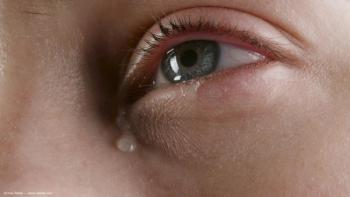
Corneal inlays still altering landscape of presbyopia
The prospect of an expanding armamentarium of corneal inlays for presbyopia correction is an exciting development, said Jay A. Pepose, MD, PhD.
By Cheryl Guttman Krader
Las Vegas-The prospect of an expanding armamentarium of corneal inlays for presbyopia correction is an exciting development, said Jay A. Pepose, MD, PhD.
Presbyopia is the most common universal ocular condition, affecting about 2 billion people worldwide and more than 80 million people in the United States between the ages 45 and 64, said Dr. Pepose at Refractive Surgery 2015.
Dr. Pepose provided an overview of four corneal inlays:
- One is currently FDA approved (Kamra, AcuFocus);
- Two are undergoing FDA review (Raindrop, Revision Optics; Flexivue Microlens, Presbia); and
- One is in early stages of clinical development (Icolens, Neoptics).
“Presbyopia correction has been the final frontier, but the future is upon us now,” said Dr. Pepose, professor of clinical ophthalmology, Washington University School of Medicine, St. Louis, MO.
The concept of using corneal inlays for correcting presbyopia was introduced in 1949 by Jose Barraquer, MD, and an era of hydrogel inlays was ushered in by Dohlman et al. in 1967. However, these early inlays blocked nutrient flow and suffered from other drawbacks so that their use was associated with a variety of problems, including keratolysis and opacification.
“More recently we have built upon the work of these pioneers and hopefully the new devices have solved the earlier issues,” Dr. Pepose said.
The Kamra is a small-aperture, polyvinylidine fluoride inlay with an overall diameter of 3.8 mm, a central hole of 1.6 mm, and measuring 5 µm thick. Its mechanism for improving intermediate and near vision is to extend depth of focus by blocking peripheral unfocused light, narrowing the blur circle on the retina.
“The Kamra does not change the refractive power of the eye, and so its benefit appears to be unaffected by continued accommodation loss of the crystalline lens,” Dr. Pepose said.
In the FDA trial, patients gained an average of 3.5 lines of near visual acuity while distance visual acuity remained unchanged at 20/20.
The inlay does not interfere with the ability to assess the crystalline lens or retina, it does not decrease the visual field or stereopsis, and it is cosmetically acceptable in blue-eyed patients. Cataract surgery can be performed with the inlay in place.
The Raindrop is a nonrefractive corneal inlay made of a hydrogel material with the same refractive index as the cornea. It measures 30 µm in thickness and 2 mm in diameter. It is placed under a corneal flap at about 30% corneal depth or into a pocket, and it improves near vision secondary to remodeling of the overlying epithelium, which creates a “Profocal” cornea.
Clinical trial results showed near vision improved equally in phakic and pseudophakic presbyopes, with 93% of phakic subjects and 83% of pseudophakes achieving 20/25 or better, Dr. Pepose noted.
The Flexivue Microlens is an add-on refractive annular lenticule implanted inside a femtosecond laser-created pocket in the corneal stroma of the nondominant eye. It is 3.2 mm in diameter, 15 to 20 µm in thickness, and has a 0.15 mm central fenestration to allow oxygen and nutrient flow. The refractive power is in the peripheral annular zone and can vary from 1.5 to 3.5D. Placement of the inlay results in corneal multifocality.
The Flexivue Microlens is implanted using a specialized inserter device, and in a study of 70 patients, near visual acuity improved by an average of 6 lines without any change in binocular uncorrected distance acuity.
The information Dr. Pepose presented on the Icolens (Intra COrneal LENS) was courtesy of Thomas Kohnen, MD, PhD, as there are no published data on this device.
Made of a copolymer material, which has hydrogel properties, it is a 3-mm refractive lens with a bifocal design. It features a small fenestration at its middle to facilitate nutrient flow, a central plano zone for distance, and a peripheral positive refractive zone for near.
The Icolens is inserted with a specialized device into a deep pocket. Assessments in patients implanted with an early version of the Icolens showed variable improvement in near vision with some loss of monocular uncorrected distance vision.
Newsletter
Don’t miss out—get Ophthalmology Times updates on the latest clinical advancements and expert interviews, straight to your inbox.










































